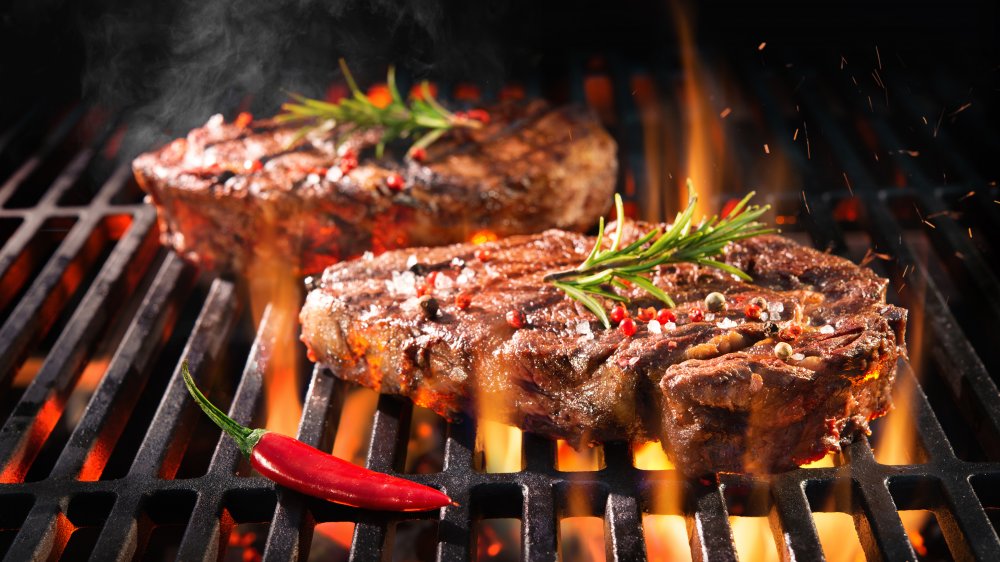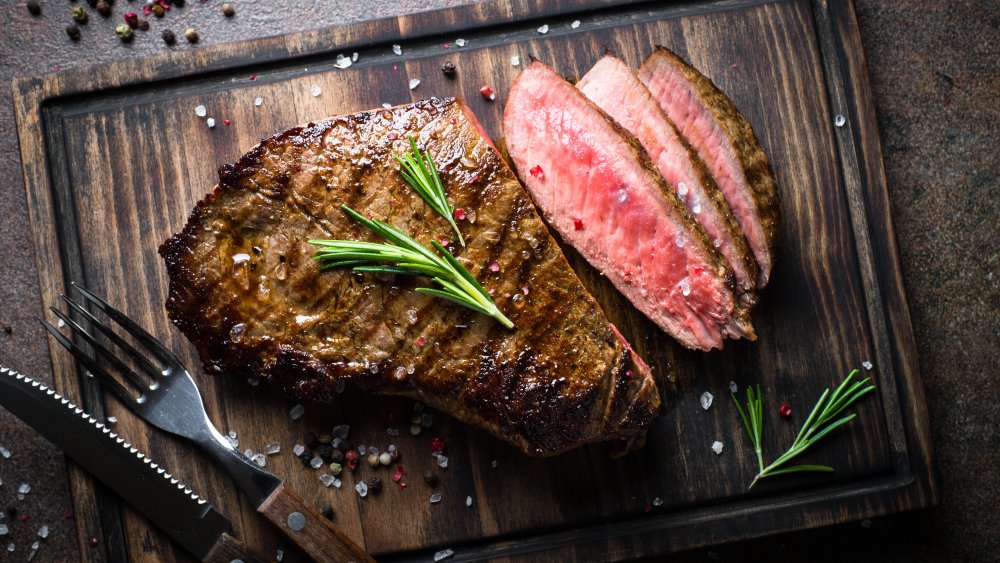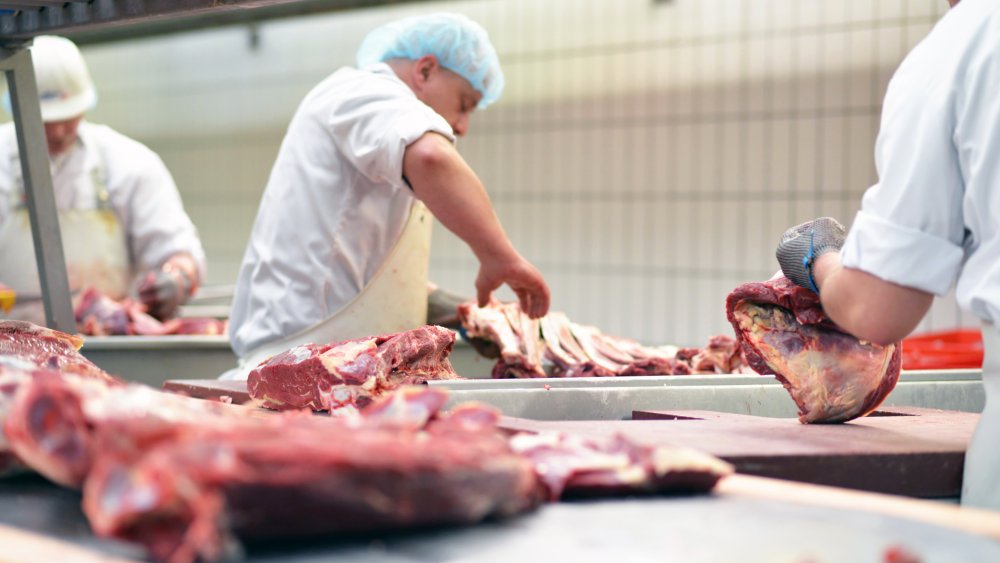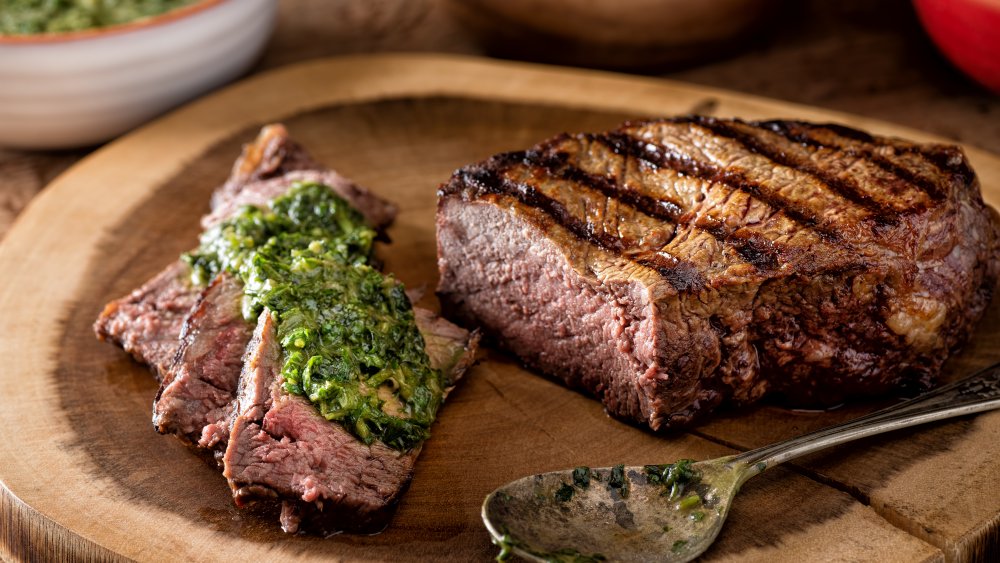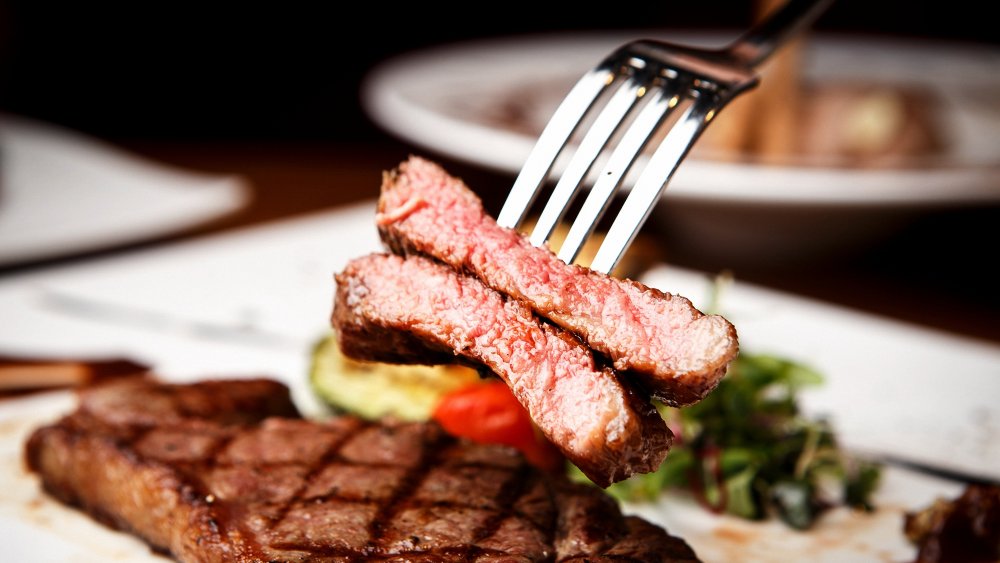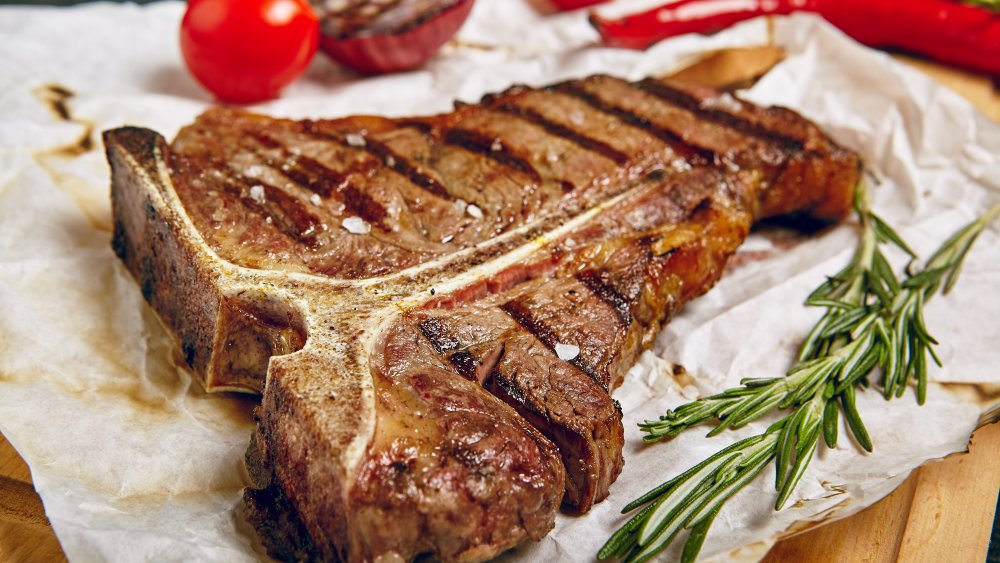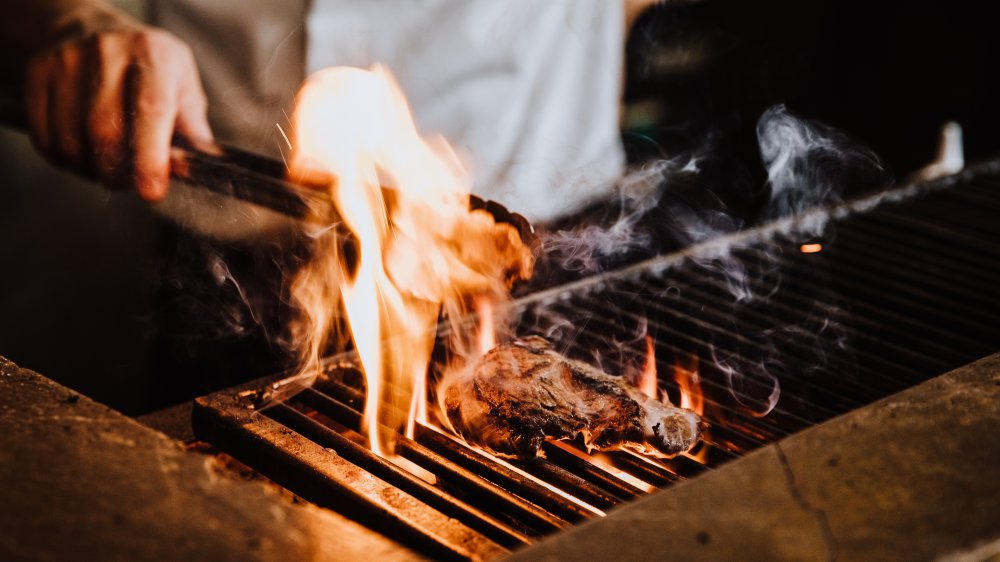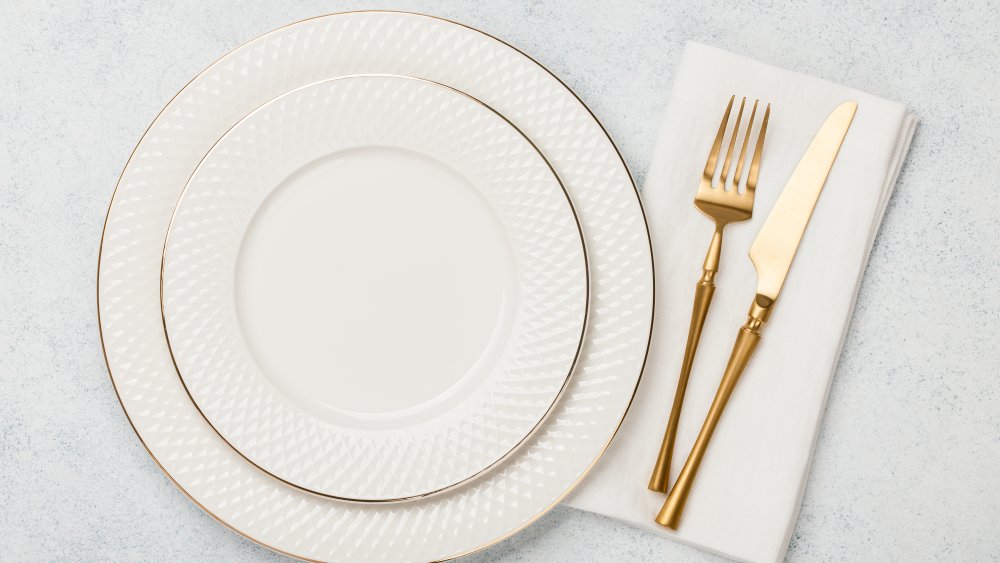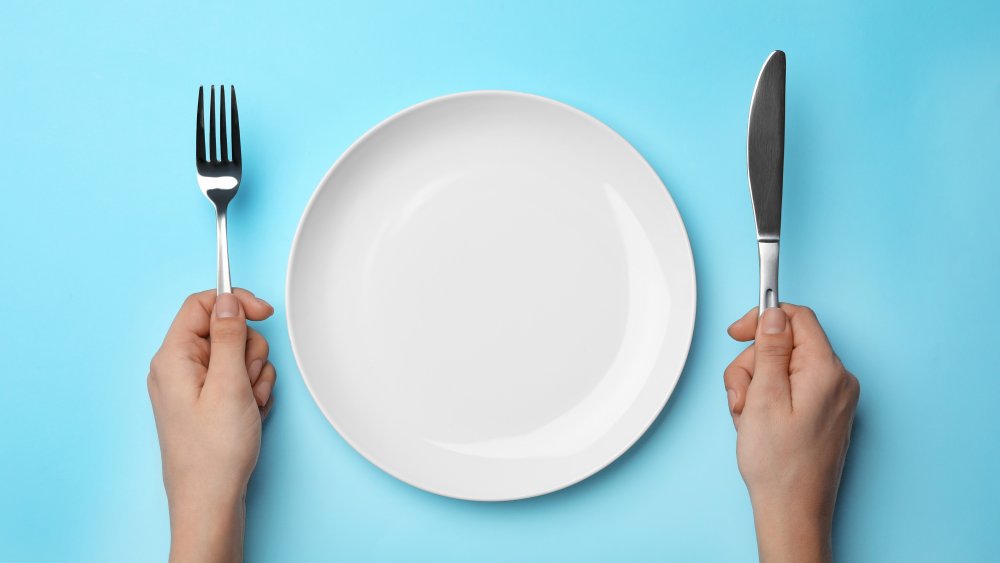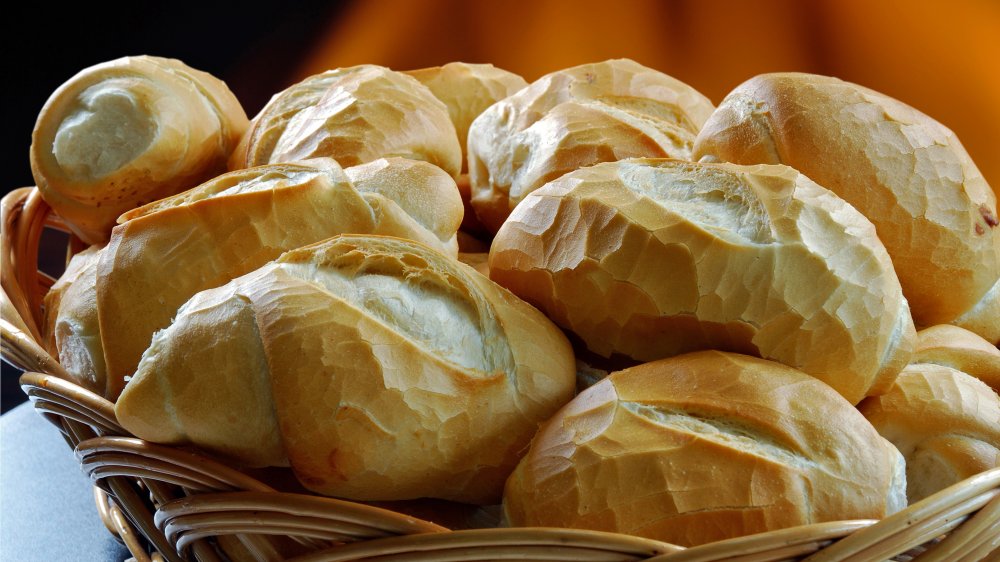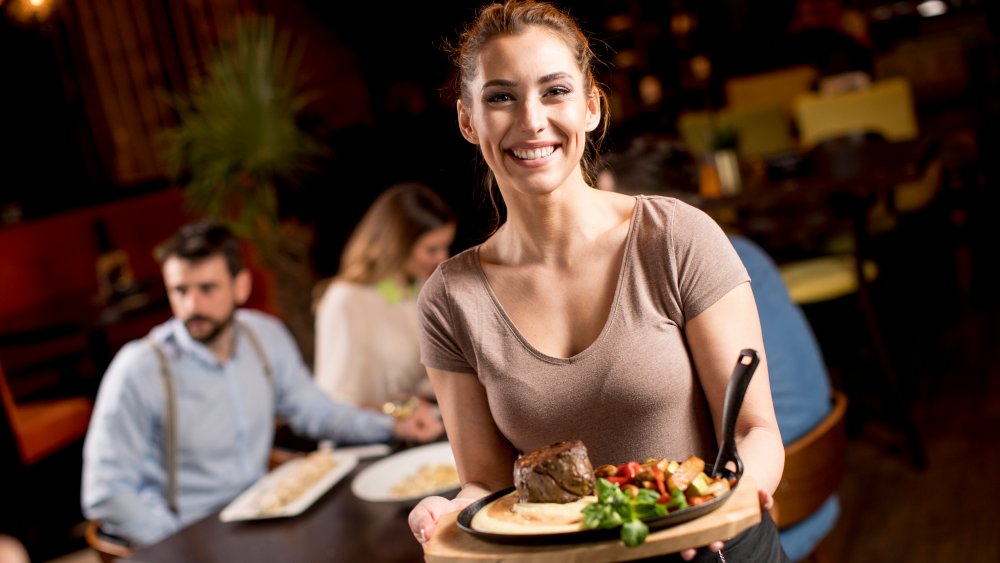Mistakes Everyone Makes When Ordering Steak
Ordering a steak at a restaurant should be simple. You peruse the menu, read the entrée descriptions, decide what sounds good, then tell your server.
But in reality, there are a surprising number of ways to screw up ordering a steak. Maybe there's an ingredient you've never heard of before or you're confused about a featured cut of meat. Beyond the menu items, you've also got to contend with how you like your steak cooked, what types of sauce (if any) you want to accompany your steak, wine pairings, table etiquette, and so much more.
If the mere thought of going to an expensive steakhouse or an upscale restaurant intimidates you, read on to learn about mistakes everyone makes when ordering steak. You're not alone, and these mistakes can serve as a handy guide for what not to do the next time you venture out on the town for a nice meal.
Not explaining exactly how you like your steak cooked
The most surefire way to be unhappy with a steak you order at a restaurant is not being specific about exactly how you like it cooked. This goes beyond whether you like your steak rare, medium-rare, medium, medium-well, or well-done. Hate parsley? Let your server know. Can't digest dairy? Make yourself perfectly clear. Hate broccoli? Ask for a substitution.
Communicating with your server or bartender is just like having a conversation with any other person. And no, they won't judge you for asking for substitutions or omissions (or at least they shouldn't!). They would rather know ahead of time than watch you pick at your food or move things around on your plate in an attempt to appear grateful.
And as for determining how you like your steak cooked so that you can communicate your preferences super clearly, do some research ahead of time. Buy a few steaks, then read up on exactly what temperature they should be and how long you should cook them (based on the cut and thickness) in order to achieve your desired doneness. Use a meat thermometer to be more exact, suggests TODAY. Try all of the different options and take notes to decide which one you like the best. It's a spectrum, after all, so the differences between one doneness and the next are subtle. It behooves you to do some research ahead of time.
Not understanding the different cuts of steak on the menu
Ribeye, porterhouse, flank, filet mignon, cube, flat iron. And these are just a few of the types of steak out there — the list is even longer, according to Taste of Home. There are so many different types of steak to choose from that it's enough to make your head spin. It's really in your best interest to understand all these different cuts of meat so that you can order one with confidence the next time you're at a restaurant.
But choosing a delicious steak doesn't have to be so overwhelming. Once you develop an understanding of the cuts you like and don't like, you can order steak at a restaurant like a pro. A good way to conduct research? Why, a taste test, of course. Head to your local butcher shop or grocery store butcher, then just start asking questions. Walk out the door with one to three different cuts of meat and advice on how best to prepare them. Make them at home, then take notes. What did you like? What didn't you like? How much fat did the steak contain, and how did it taste? How was the texture?
Using too much steak sauce
Maybe you just never really liked steak growing up. Or maybe your parents or guardians didn't do the best job preparing steak to your liking. Either way, you became accustomed to dousing your meat in a steak sauce like A1 or Heinz 57.
But you're an adult now, and you're more knowledgeable about how a steak should be properly prepared for maximum flavor. Go ahead and do yourself a favor: Throw that pre-made bottle of steak sauce in the trash. You just don't need it. Meat quality has improved, and you'll insult the chef if you use it, according to Thrillist.
The best way to order a steak? Plain, with a little salt and pepper to taste. But if that's not your speed, there are dozens of gourmet and homemade steak sauces that are so much better than the pre-packaged stuff. Chimichurri, béchamel, mushroom sauce, béarnaise, peppercorn sauce — the list goes on and on. The next time you're at a restaurant and you see one of these sauces on the menu, go ahead and order it rather than reaching for that bottle of Heinz. Even if you don't like it, you'll have tried something new, and you can move on to the next gourmet sauce the next time you order steak at a restaurant.
Cutting your entire steak before eating it
If your first instinct upon ordering and receiving a steak is to start hacking away at the meat like a madman, stop and back away from the knife. It's bad form to cut up your entire steak (or whatever cut of meat you're eating) into bite-sized pieces all at once. There's not really a good reason for this — it's just what the generally accepted rules of etiquette dictate.
Sure, you're welcome to do this at home when no one's looking if it just makes your life easier, but when you're out at a restaurant, skip this step. Instead, use your fork and knife to cut off one bite of steak at a time, suggests the Etiquette School of New York. Thoroughly chew and swallow this bite before loading up your fork with the next one.
Chances are you're at the restaurant with someone else, so taking a break between each bite gives you a chance to ask a question or make a comment during a conversation. Plus, if you've ever eaten too much meat too quickly before, you know how uncomfortable it can feel to get steak stuck in your throat. Slow down and relish in the moment. Your stomach will thank you, too.
Chewing on the steak bone
Sometimes, a steak is just so delicious that you find yourself wanting more, more, more. But just because the chef cooked and seasoned it perfectly (and you selected your preferred cut of meat like a pro!) does not mean you should ever start gnawing on the bone to get the last juicy little bits of steak you ordered. Nope. Never. It's just bad etiquette.
If you can't quite fathom why this is a no-no, imagine how you'd feel if you were sitting in a luxurious restaurant having a romantic dinner with the love of your life. How would you feel if you looked over and saw some random dude chewing away at his steak bone like an animal? It's not very appetizing, nor is it polite.
You may, however, use your fork and knife to cut every last bit of meat and fat off the bone, then bring it to your mouth on your fork. If you really, really can't resist chewing on the bone, just ask for a to-go container, then chew away once you're in the privacy of your own home. Or even better (and with your veterinarian's prior approval) give the bone to your four-legged friend as a treat, suggests OpenTable.
Ordering the steak to be cooked well-done
When you order a steak at a restaurant, your server will follow up with a simple question: "How would you like that cooked?" Your options include some variation of rare, medium-rare, medium, medium-well, or well-done.
And while, yes, technically you could order your steak cooked to any one of these specifications, it's generally not a good idea to order your steak well-done. It's a waste of money since you won't be getting the full breadth of flavors that the steak can offer. And it's an order that generally offends most chefs, who believe you are ruining a quality cut of meat, according to Delish. They won't necessarily sabotage your food, per se, but they probably won't pay that much attention to it, either. It's not professional, but it's reality, unfortunately.
If you're skeptical about ordering your steak even medium-rare, ask yourself why. Really dig deep to get to the bottom of this aversion. Is it the texture? Is it because someone told you one you could get sick from eating raw meat? Is it because you grew up eating well-done steaks prepared by Mom or Dad? Even after this exploration of your feelings, if you still can't stomach the thought of eating a somewhat rare steak, then go ahead and cook yours well-done — at home.
Spitting steak gristle into your napkin
There are very few things worse than biting down onto a bite of steak you ordered, only to be met with gross, tough gristle. Your first instinct might be to politely and discreetly bring your napkin to your mouth, then spit out the gristle, hoping that no one notices. And while you're on the right track, it's generally not the best way to handle the situation. For starters, what happens the next time you pick up your napkin? If you forget the gristle is there, you could fling it onto the table or, worse, onto the person next to you. Gross. If you manage to keep the gristle in your napkin, that's not very pleasant for your waitstaff to deal with after you leave. Imagine how you'd feel!
Etiquette expert Emily Post has another idea for handling this unpleasant encounter: Simply bring your fork to your mouth, then use your tongue to place it on the fork. Next, gently place the gristle to the side of your plate. And whatever you do, don't use your fingers. She says that, as a general rule, if something goes into your mouth with a utensil, it should come out with a utensil, too. Good to know!
Not pairing your steak with the right wine
If you're ordering a steak, chances are you're at a steakhouse or a nice restaurant. Maybe you're celebrating something — an anniversary or a promotion, for example. You decide to order a glass (or a bottle!) of wine for the table.
Hold it right there. Before you order anything, it's important to understand that certain wines pair better with certain types of food, steak included, according to Food & Wine. And yes, this really does matter. Simply put, pairing the right wine with your food is like a symphony — all the flavors are working together in harmony. No, you won't hurt anything if you order the wrong wine. But you just might be missing out on something extraordinary.
It's always a good idea to ask the sommelier or your server for their recommendation. The chef has likely already thought about this question and can offer a wine pairing. Another good way to study and familiarize yourself with wines? Attend wine pairing dinners that feature foods and wines that are specially prepared to go together. Just think of how impressed your friends and family will be the next time you go out to eat to show off your newfound expertise!
Switching your fork to your dominant hand after cutting your steak
You already know that you're supposed to delicately and politely cut your steak with your knife while holding it in place with your fork. But it's what comes next that's a big faux pas.
If you switch your fork over to your dominant hand, then take a bite, you're really breaking the rules of etiquette here. Yes, it just feels more natural to bring the food to your mouth with your dominant hand, but it's just not necessary. Apparently, this is a foible that's unique to Americans, according to Slate. In other countries, people have no problem eating with their non-dominant hand.
Here's the right way to cut and eat your steak. Hold the knife in your dominant hand. Hold your fork, tine-side down, in your non-dominant hand. Cut a small, easily chewable bite with your knife, then spear the bite with the tines of your fork. Bring the bite to your mouth, with the tines facing inward. Voila! You're eating like a pro. With a little practice this will soon become second-nature (and Americans can stop being the laughingstock of the world when it comes to fine dining!).
Filling up on bread before your steak arrives
We've all made this mistake once or twice. You forgot to make a reservation, so you waited in the lobby for an hour for a table. When you finally sit down, you're famished. Your waiter places a basket of bread in front of you, and you greedily gobble down slice after slice.
By the time you order your steak, you realize it's too late. You've already gorged yourself on bread, and now you'll have to find a way to politely eat your actual dinner — an expensive steak — without completely overstuffing yourself. Restaurants pretty much plan on you doing this since bread is a lot cheaper for them to serve you than other types of food, according to the Los Angeles Times.
Sure, scheduling mishaps happen. But if you can avoid waiting around on an empty stomach for a table, you'll be better off in the long run. Make a reservation. Offer to sit at the bar. See if there's a community table. And try, with all of your might, to restrain yourself from filling up on bread as soon as you sit down. It's a test of your willpower for sure, but you can do it. And you'll be glad you did when you see that nice, juicy, hot steak on the plate in front of you.
Ordering the most expensive steak on the menu
Price dictates value, right? The more expensive something is, the higher the quality and, in general, the better it should be. That's not necessarily true, especially when it comes to ordering a steak.
Certain cuts of meat are more expensive because, quite simply, they cost more to raise and prepare. Kobe beef, for instance, comes from cattle that are raised according to exacting specifications in Japan. It costs a lot of money for that piece of meat to make it all the way to your plate. But just because it's expensive does not mean you're guaranteed to like it. You should let your own personal tastes dictate what you order, not the price tag. Some people love filet mignon, but others would much rather have a fattier steak, like a ribeye. And that's okay.
It's particularly true that you should never order the most expensive item on the menu if you're dining as the guest of someone else — even if they insist, according to the Washington Post. It's just bad manners, and this move makes you look greedy and ungrateful, no matter how you or your host tries to spin it.
Not asking questions about the steak on the menu
If you feel foolish for not understanding what certain words mean or what certain ingredients are while you are ordering steak from a menu, you're not alone. Restaurants aren't intentionally trying to confuse you — they just don't always do the best job of translating foodie lingo into layperson terms that everyone can understand.
You should never feel embarrassed or awkward about asking your server what something on the menu means. It's literally their job to help you make the best decision you can, and that includes knowing the ins and outs of everything on the menu (ideally), according to the Orange County Register. Need them to clarify how a food is prepared? Ask away. Not sure exactly what a French or Spanish word means? Ask again. Didn't quite catch what the special was? Ask them to repeat themselves.
The best servers are like guides or translators — they help present the chef's creations in the best light possible. They can and should be happy to answer any questions that arise as you're looking over the cocktail menu, the dinner menu, or the dessert menu.
Adding way too much salt to your steak
Here's a common scenario you've probably witnessed before: You order a steak, and the waiter brings out your meals and sets the plates down in front of everyone around the table. He asks if he can get you anything else, to which you and your friends reply, "No, this looks great." As soon as his back is turned, one of your friends reaches for the salt shaker and starts liberally dousing his steak with these tiny white specks. And he didn't even take one bite first.
At the very least, go ahead and give your steak a taste before reaching for the salt (and pepper, for that matter). But chances are, you should just generally err on the side of not adding salt to your steak when you visit a restaurant. Why? Because there's a really good chance it's already plenty salty, according to the Center for Science in the Public Interest (via WebMD). Restaurant chefs are great at understanding the difference that seasoning can make in terms of how a dish tastes. They salt at various stages throughout the cooking process — beginning, middle, and end — so chances are there are actually multiple applications of salt already on your steak. Adding more is just overkill and, frankly, will numb your senses to the actual taste of the meat itself, which is what you're paying for, after all.
Not sending your steak back if it's not prepared to your liking
Look, we get it. Nobody wants to be the person at the table labeled as high-maintenance for sending their food back to the kitchen, especially if you're with a group you want to impress.
But when it comes to ordering steak — especially expensive cuts — it's totally acceptable and, in fact, encouraged to send your plate back to the kitchen if the meat is not cooked to your liking, according to Thrillist. If you told the waiter medium-rare and your steak comes out well-done, that's a problem. The kitchen staff at any good restaurant prides itself on getting your order right, especially when it comes to how your meat is cooked. They'll be happy to cook you a new steak if it means keeping you happy and satisfied as a customer. Their response to this request will likely determine whether you recommend the restaurant to friends or whether you ever come back again, so they want to get it right. Don't be bashful and don't be embarrassed if you need to send your steak back. It's not your fault!
